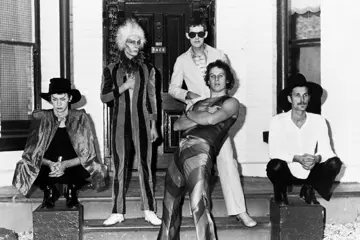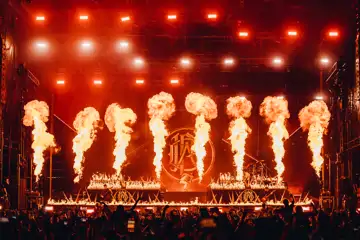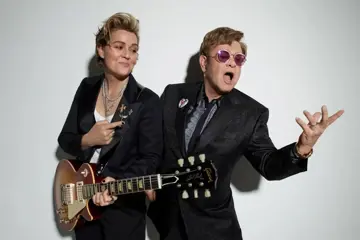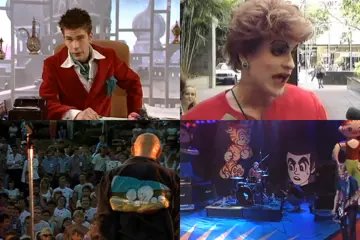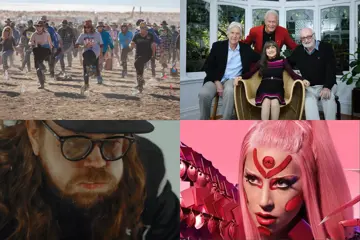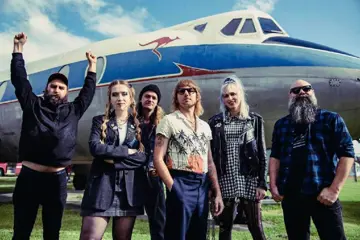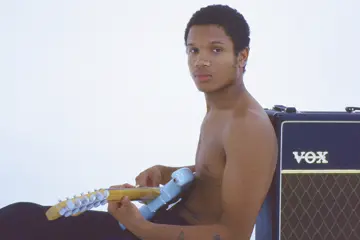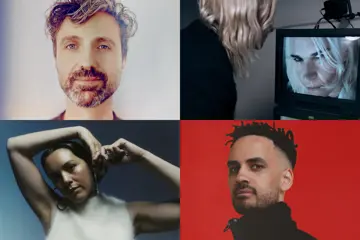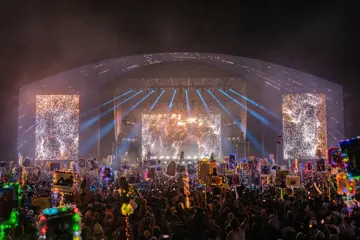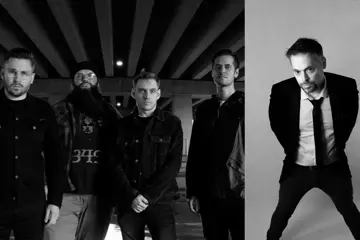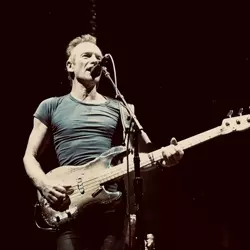 Sting
StingPerth’s week started with two Giants triumphantly roaming the city streets and ended with two giants of contemporary music delighting thousands of concertgoers on the South Perth foreshore not far from where the puppets had travelled.
To complete the rather obvious analogy, one of the performers towered over the other physically but it was the smaller and more loveable of the two who probably captured more hearts.
Paul Simon and Sting strode on from opposite sides of the stage both wearing black T-shirts. Sting looked as though he could have come straight from the gym, while his diminutive partner in a trilby would have looked more at home in a New York café.
From the introductions through to the post-encore embrace their mutual respect, bordering on affection, for each other was obvious.
Sting introduced his collaborator as the great Mr Paul Simon, while to the delight of the crowd Simon reciprocated with an introduction of Mr… Gordon Sumner.
There was no sense of competition or one upmanship between the two but the question in everybody’s mind was: Who is going to be better?
The concert started on a high with upbeat collaborations on Sting’s Brand New Day and Simon’s The Boy In The Bubble, followed by a hauntingly beautiful duet of Sting’s Fields Of Gold.
Don't miss a beat with our FREE daily newsletter
From there Mr Simon and Mr Sumner disappeared and it was rock legend Sting’s turn to take the first solo set. He started with a quick shoutout to members of his family in the audience. A group of people in the $500 seats were either family members or happy to claim to be.
Sting’s first solo set comprised of five upbeat songs from The Police. It enabled various members of the combined 14-member backing band to demonstrate their considerable skills on a wide range of instruments, the highlights being an amazing tuba solo and frenetic work on the violin.
This theme continued throughout the night as the rock giants (last reference we promise) were happy to share the limelight with their considerably talented supporters. Dozens of instruments ranging from the piano accordion to a metal washboard were used with innovative affect to provide an additional edge to the music. The soaring vocals of Adelaide girl Jo Lawry complemented the male voices on several numbers.
Sting’s first set climaxed with the classic Walking On The Moon, and then it was time for his partner to rejoin him for a duet of Mrs Robinson which had the crowd singing along.
Simon brought the tempo, but not the crowd’s enjoyment, down with 50 Ways To Leave Your Lover to introduce his solo set. Unlike Sting, Simon relied more on his solo (post-Garfunkel) work, the highlight being the title track from his seminal 1986 album Graceland.
The transition to Sting’s next solo set was a collaboration of Sting’s Fragile. The highlights of Sting’s second solo set were the Police classics Message In A Bottle and Roxanne which had the crowd in raptures.
Sting and Simon’s voices complemented each other on a joint rendition of the Simon & Garfunkel classic The Boxer before Simon took over with a collection of his solo work which reached a climax with the Graceland tracks Diamonds On The Soles Of Her Shoes and You Can Call Me Al, the sustained a cappella introduction to the latter being one of the great moments of the night. Those two songs with their strong African beat had the crowd out of their seats, never to return.
The significance of Simon’s early work with Art Garfunkel was demonstrated by the fact that two classics from that era along with the Police’s Every Breath You Take made it into the encore.
The two friends had great fun bouncing off each other during Cecilia. The finale saw them singing alternating lines in a frenetic version of Every Breath You Take followed by alternating verses and a combined chorus of the epic Bridge Over Troubled Water. Sting sensibly did not try to replicate Garfunkel’s role but added his own earthier style to the classic.
The band was sent off to great acclaim while the two buddies stayed behind for one final acoustic version of the Phil Everly classic When Will I Be Loved.
With such a great combined back catalogue of great hits it’s not clear why they would have chosen to finish with a cover, perhaps it was to make the point that they were “On Stage Together” as promoted, and at the end neither was pre-eminent over the other.
In fact over the course of the night their respective contributions in terms of number of songs performed, time on stage and entertainment value was virtually equal.
Fans of Simon from the late 1960s onwards who had come to see him would have left as fans of Sting while fans of Police from the early 1980s and Sting’s subsequent solo work would have been humming Simon classics all the way home. Non-aligned fans would have been doubly pleased as both met even the highest expectations individually and the sum of these two music legends was greater than their individual parts.

